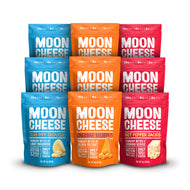8 principles bodybuilders should keep in mind while meal prepping for maximum results.

Meal prep for bodybuilding is a practice of planning, preparing, and portioning meals in advance to support muscle growth, recovery, and overall fitness goals. Bodybuilders often have specific dietary requirements to meet their protein, carbohydrate, and healthy fat needs while managing their caloric intake. Proper meal prep ensures they have nutritious meals readily available, making it easier to adhere to their diet and achieve their fitness objectives.
Here are some key principles to consider when meal-prepping for bodybuilding:
-
Calculate macronutrient requirements: Determine your daily calorie intake and the appropriate ratio of macronutrients (protein, carbohydrates, and fats) based on your fitness goals, body weight, and activity level. Generally, bodybuilders aim for higher protein intake to support muscle growth and repair.
-
Plan your meals: Create a meal plan that includes a variety of nutrient-dense foods. Prioritize lean protein sources like chicken, turkey, cheese, lean beef, fish, eggs, and plant-based options such as tofu or legumes. Include complex carbohydrates like brown rice, quinoa, sweet potatoes, whole wheat bread, and plenty of fruits and vegetables for vitamins, minerals, and fiber.
-
Portion control: Use food scales or measuring cups to ensure accurate portion sizes. Individual meals should contain the appropriate amounts of protein, carbohydrates, and fats according to your dietary plan.
-
Cook in bulk: Prepare larger quantities of food in a single cooking session. Grill, bake, or steam your protein sources and vegetables. Cook larger batches of grains or legumes to save time during the week.
-
Storage: Invest in meal prep containers that are microwave-safe, stackable, and have separate compartments. Divide your cooked food into individual portions, making it convenient to grab a complete meal when needed. Label and date your containers for easy identification.
-
Refrigeration and freezing: Refrigerate your meals for 3-4 days to maintain freshness. For longer storage, freeze meals in airtight containers. Certain dishes, like salads or foods with high water content, may not freeze well and are better prepared fresh.
-
Variety and seasonings: Keep your meals interesting by using different herbs, spices, and seasonings to enhance flavors without adding excessive calories. Experiment with various recipes and ingredient combinations to prevent monotony.
-
Snacks and supplements: Include healthy snacks like dehydrated cheese, nuts, Greek yogurt, protein bars, or fruit for quick energy and additional nutrition. Depending on your specific goals and nutritional needs, you may also consider incorporating supplements such as protein powder, creatine, or multivitamins. Consult with a healthcare professional or registered dietitian for personalized recommendations.
- Drink water! To keep the body hydrated, men should drink about 125 ounces per day and women should consume 91 ounces per day.
Another helpful approach to determining your water needs is to listen to your body's signals. Thirst is one indicator that you may need to drink more water. Additionally, the color of your urine can be a useful indicator of hydration. Clear or light-colored urine usually indicates proper hydration, while darker urine may suggest that you need to drink more fluids.
Remember, meal prep is a tool to help you stay on track with your nutrition and fitness goals. Adjust your meal plan and portion sizes as needed based on your progress and feedback from your body. It's also important to listen to your body's hunger and fullness cues and make adjustments accordingly.
Moon Cheese is a great snack for anyone prepping meals in advance; it's high in protein, low carb, has zero sugar, and doesn't need to be refrigerated so it's a great on-the-go snack.

